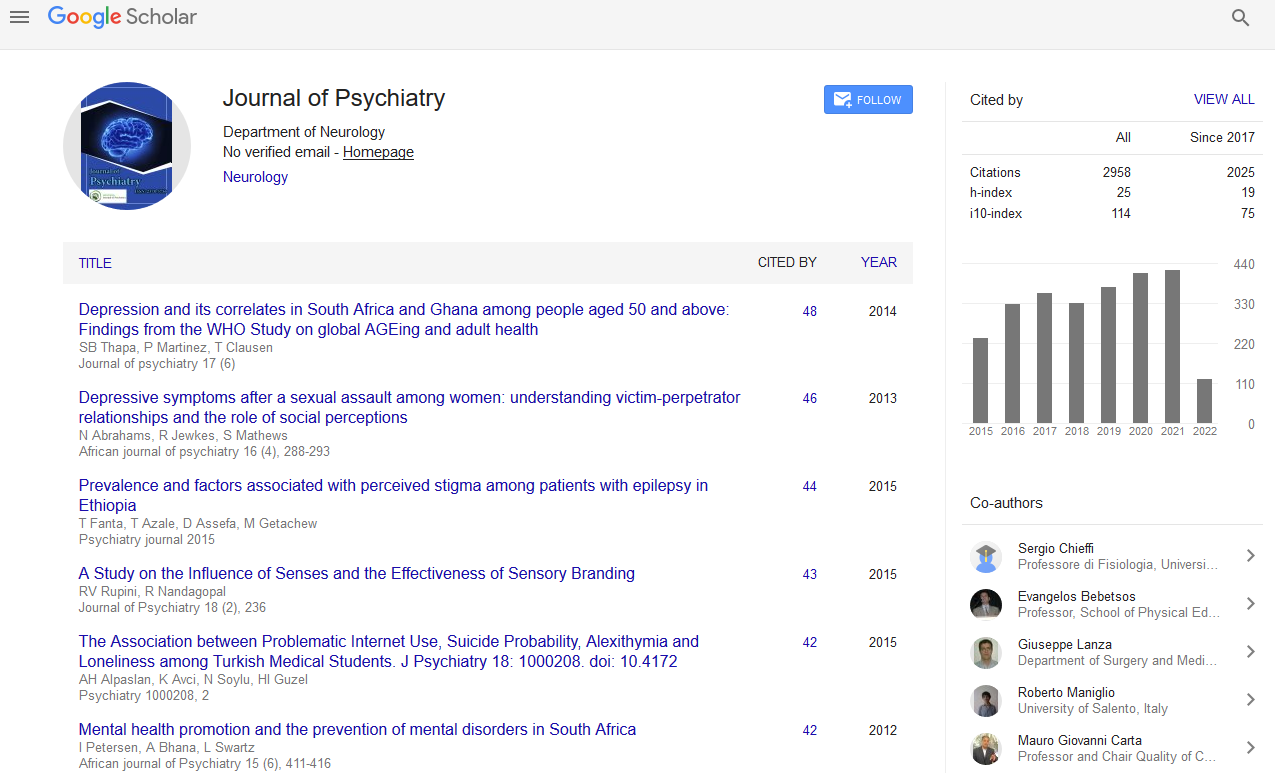PMC/PubMed Indexed Articles
Indexed In
- RefSeek
- Hamdard University
- EBSCO A-Z
- OCLC- WorldCat
- SWB online catalog
- Publons
- International committee of medical journals editors (ICMJE)
- Geneva Foundation for Medical Education and Research
Useful Links
Share This Page
Open Access Journals
- Agri and Aquaculture
- Biochemistry
- Bioinformatics & Systems Biology
- Business & Management
- Chemistry
- Clinical Sciences
- Engineering
- Food & Nutrition
- General Science
- Genetics & Molecular Biology
- Immunology & Microbiology
- Medical Sciences
- Neuroscience & Psychology
- Nursing & Health Care
- Pharmaceutical Sciences
Abstract
Attentional Bias in Remitted Depressed Patients: Evidence from an Eye- Tracking Study
Mi Li, Shengfu Lu, Lei Feng, Bingbing Fu, Gang Wang, Ning Zhon and Bin Hu
Objectives: To investigate the attentional bias characteristics of remitted depressed (RD) patients toward both happy and sad facial expressions. Methods: Eye-movement data for the free-viewing facial expressions information of two groups (RD patients and healthy control (HC)) were acquired using the eye-tracking technique. The RD patients’ initial attentional orientation toward different pieces of emotional information and their attentional bias related to the attention-maintenance components were analyzed. Results: (1) On the initial orienting indicators (direction of initial gaze and initial fixation latency) and the initial attention maintenance indicators (first fixation duration), the RD patients showed no attentional bias toward the emotional faces; (2) For the late-stage attention maintenance indicators (total fixation time), both the RD group and the HC group exhibited attentional bias toward happy faces; the bias was smaller in the RD group than in the HC group; (3) For the RD group, there was a positive correlation between the direction of the initial gaze toward happy faces and total fixation time and a negative correlation between the initial fixation latency toward happy faces and total fixation time, whereas there were no such correlations in the HC group. Conclusions: The RD group displayed an attentional bias trend for happy faces, and this increase in the positive bias reflected the RD patients’ subjective, active efforts to establish a "protective bias" that would both alleviate and improve depressive symptoms.


